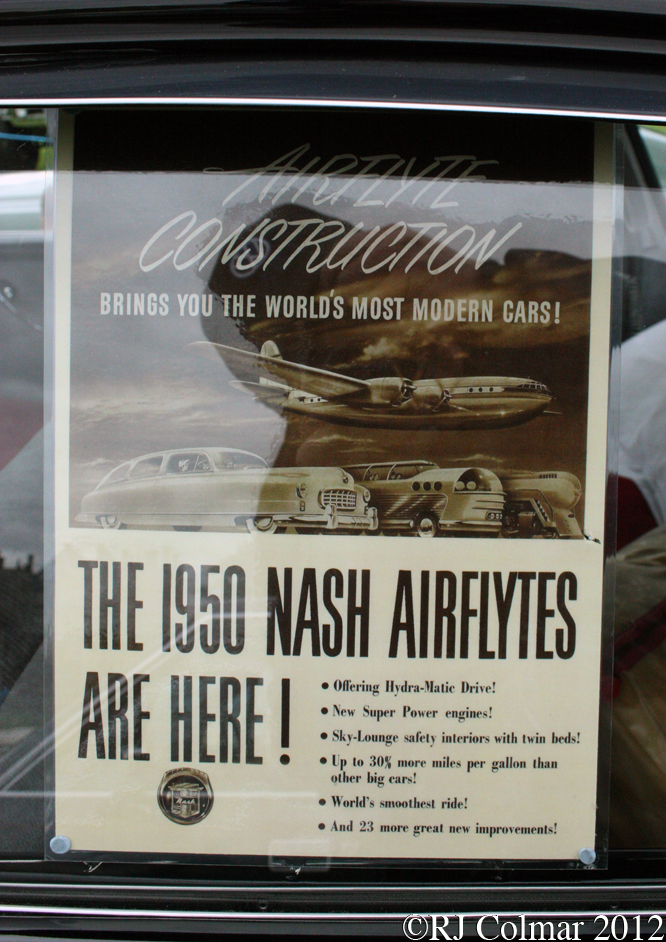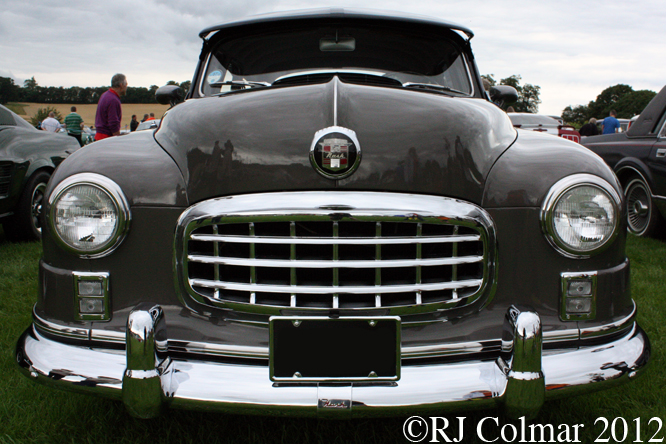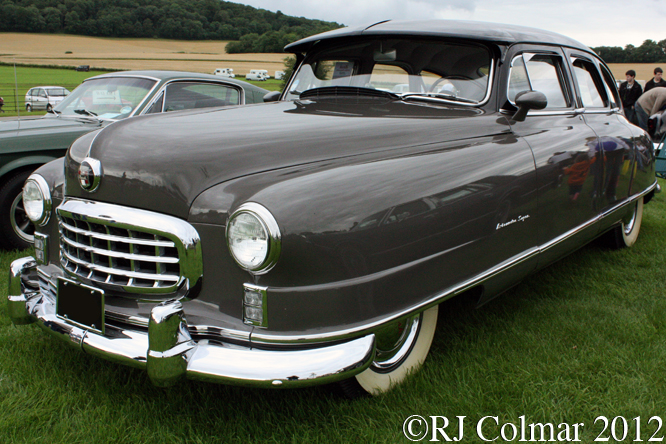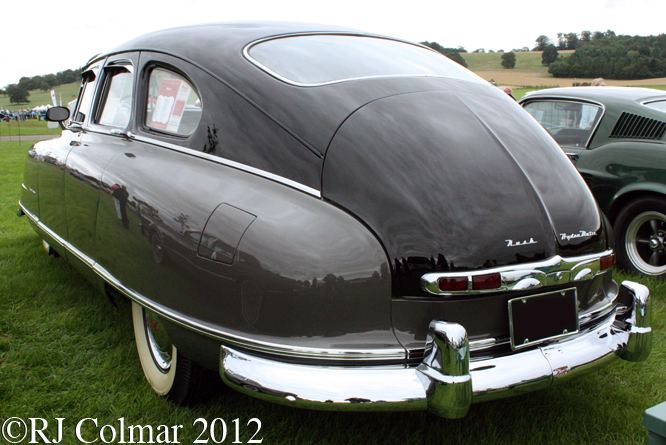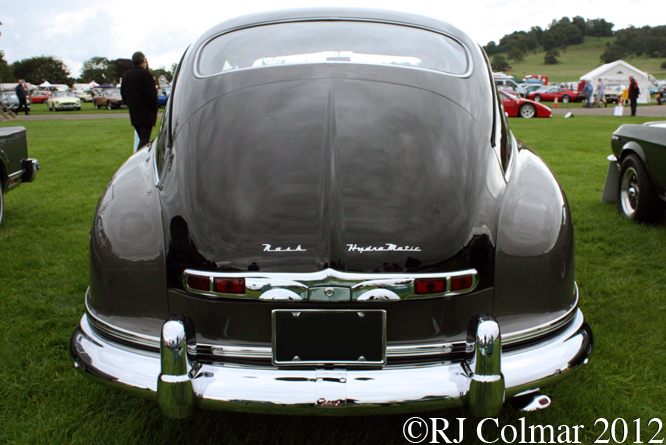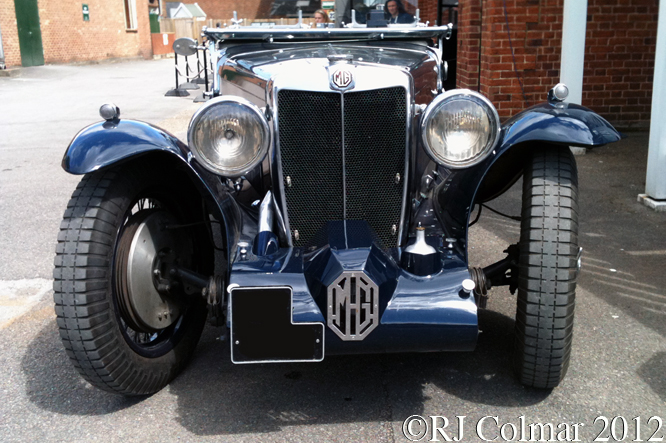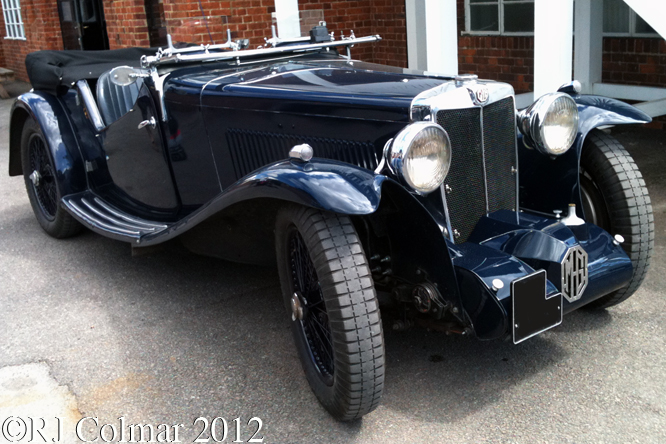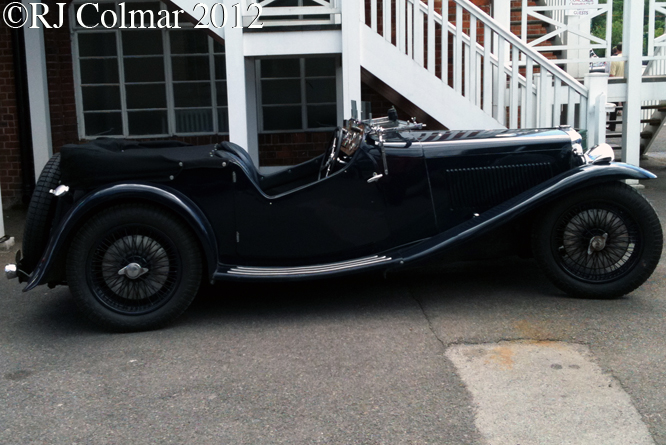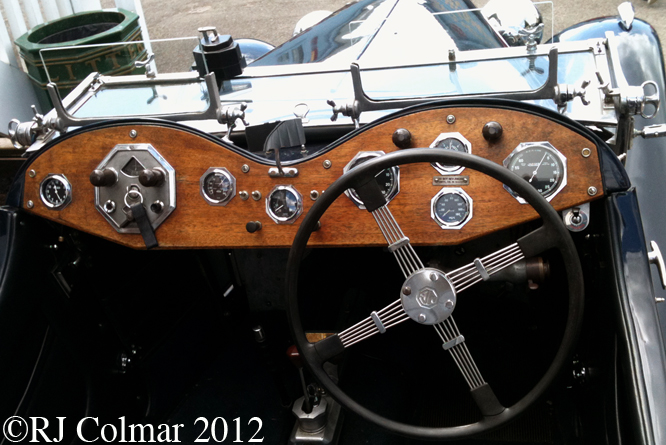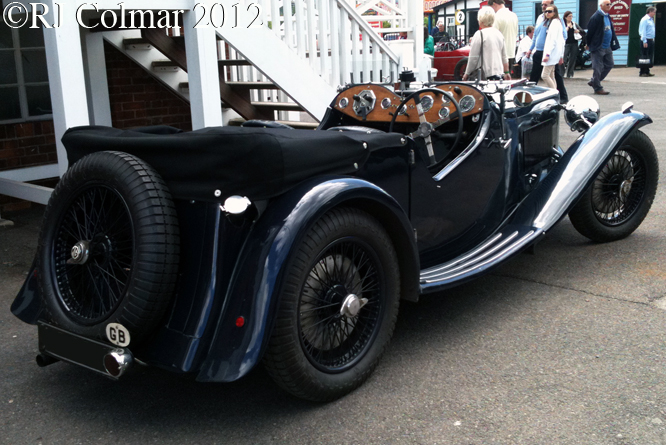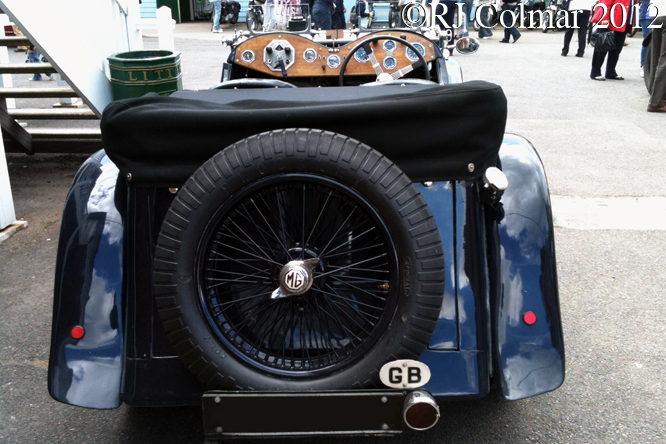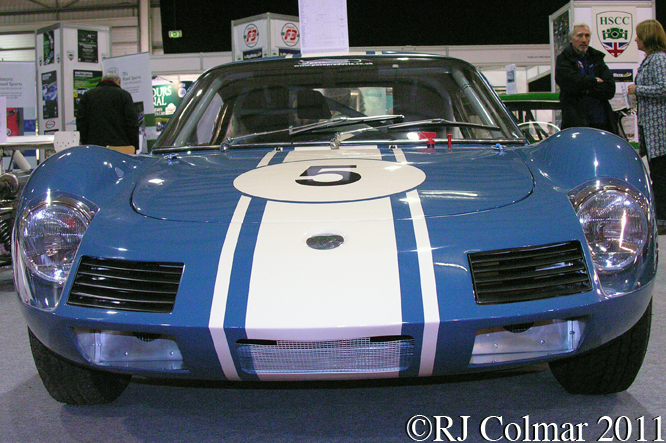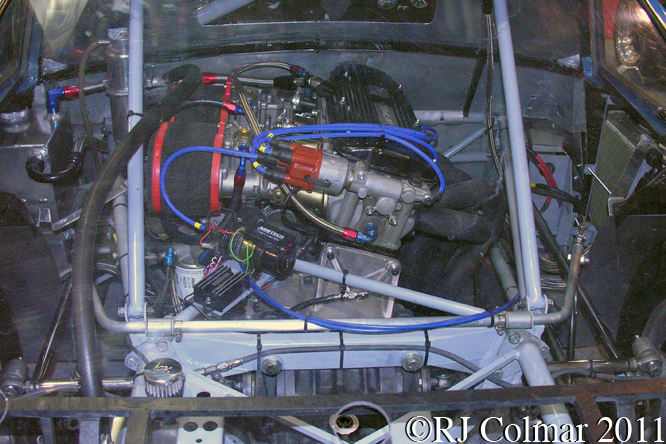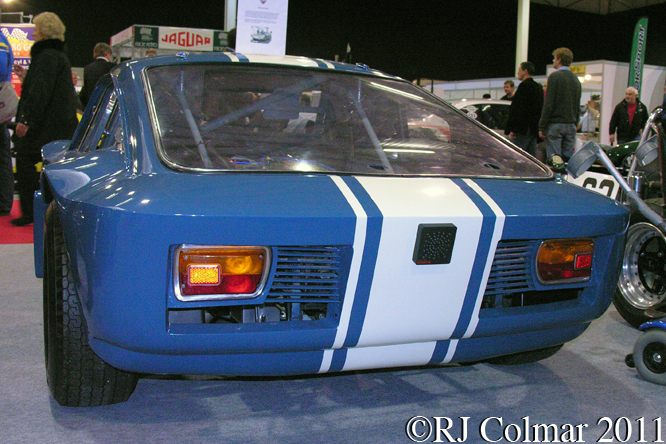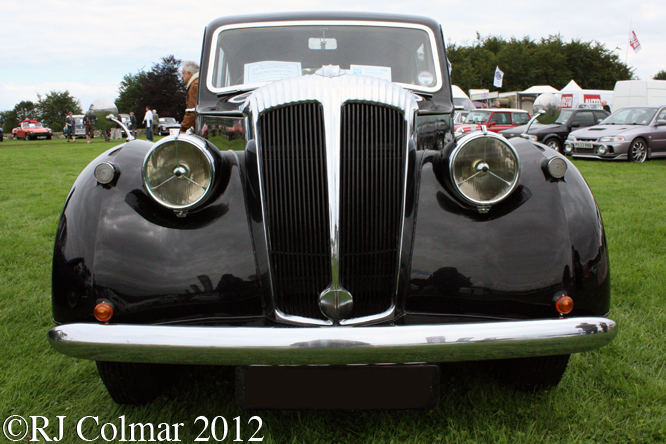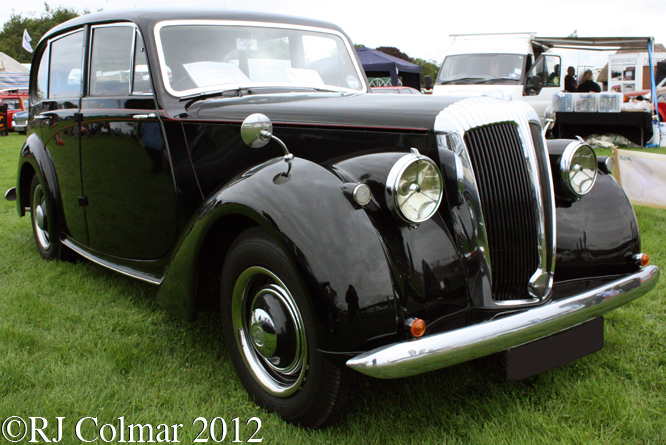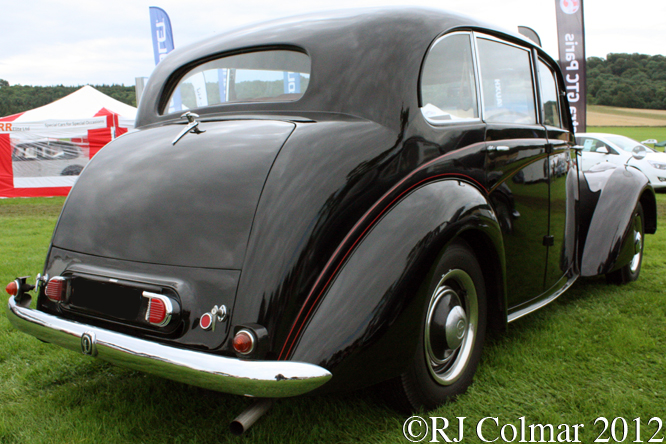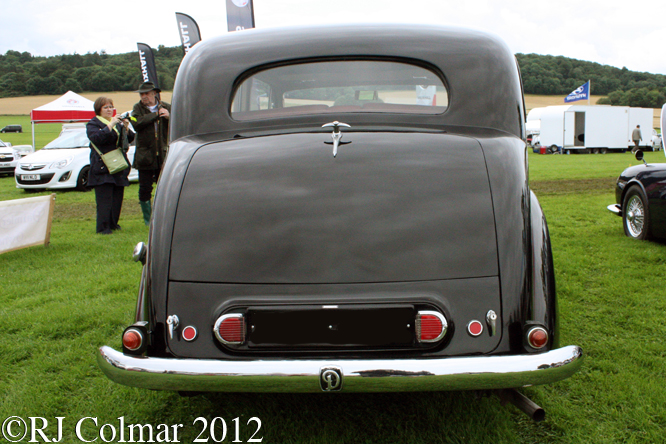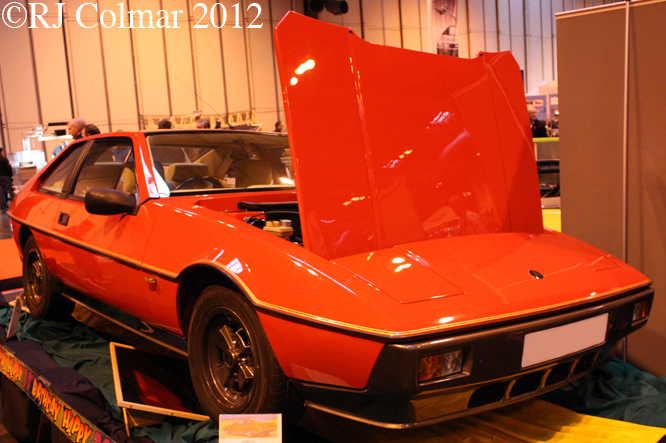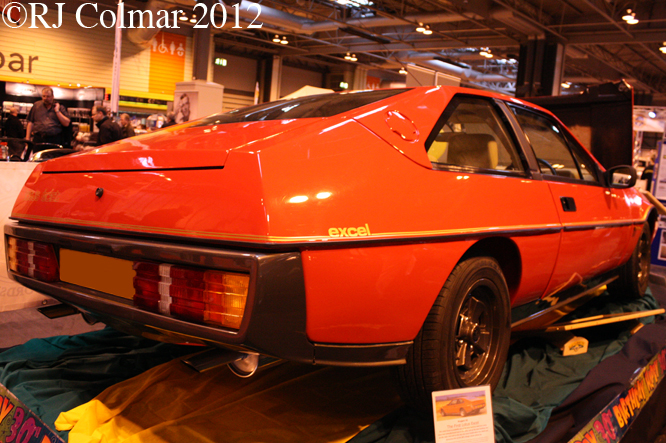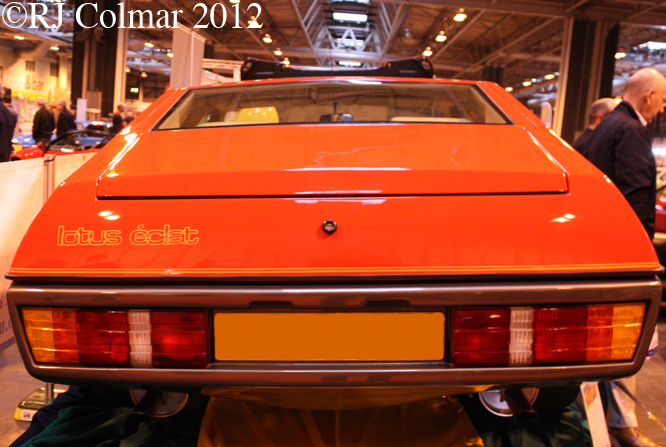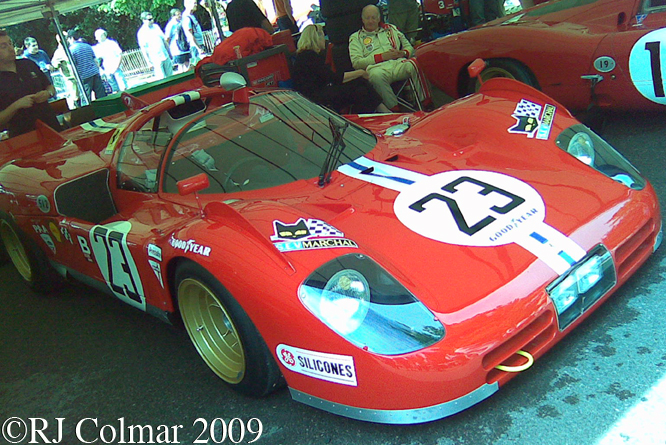A couple of weeks Ted Walker kindly invited me to the Autosport International a racing car show held at the National Exhibition Centre in Birmingham.
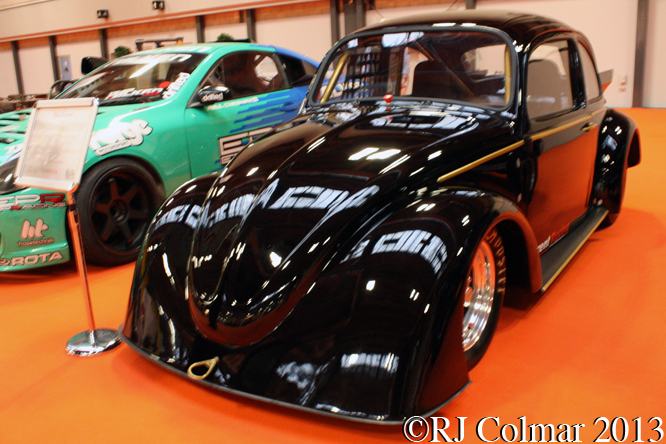
Looking into the back of this Beetle it became immediately obvious something was missing in the form of a motor, it turns out the Black Current.III is an electric drag racing car run by Current Racing with sponsorship from AmTecs Ltd is powered by two 9″ in-line electric motors good enough to have reached a personal best of 9.51 on the 1/4 mile with a top speed of 135 mph.
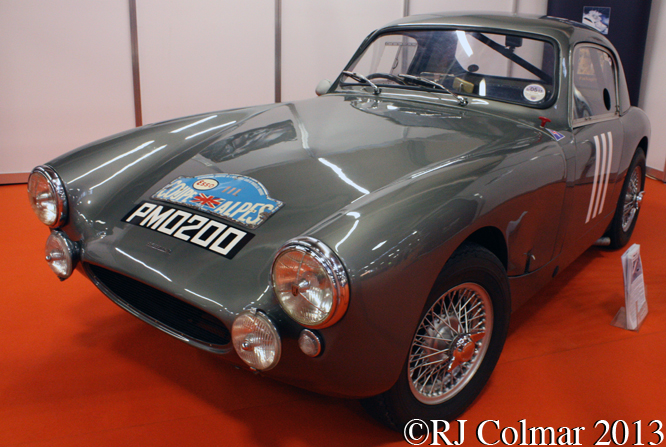
Above on the Manufacturing Resources Centre stand, more than ably manned by Roger Onions, was one of six Williams & Pritchard bodied Austin Healey Sebring Sprite’s John Sprinzel ordered in 1960. PMO200 is the sister 1961 Sebring team car to S221 which I looked at a couple of years ago. This car finished 15th in the 12 Hour classic with Joe Bazzutta and Glen Carlson at the wheel having been driven to 5th place in the Sebring 4 hour race the previous day. The car was also driven on the 1962 Monte Carlo Rally before passing through my host Ted Walker’s hands in the 1970’s.
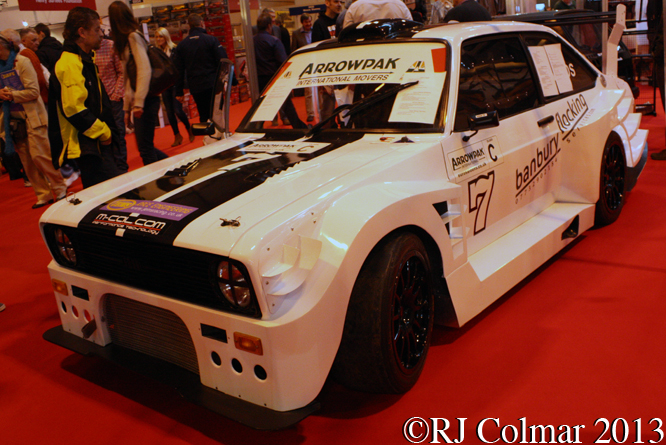
Mick Gregory can probably lay claim to building the worlds most heavily modified Ford Escort Mk 2, having started this project 6 years ago with an everyday 35 year old Ford Escort Mk 2 road car, modifications include a super charged Duratec engine good for 450 horsepower, an Elite six speed sequential gearbox, a Subaru rear axle and extensive use of carbon fibre in the body work, this car can be yours for just £90k.
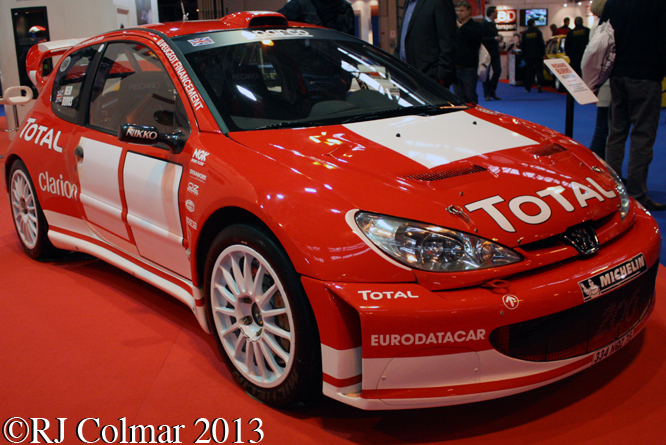
Ten years ago 2001 World Rally Champion Richard Burns was leading the 2003 World Rally Championship driving a Peugeot 206 WRC like the one seen above when he was diagnosed with a brain tumor after blacking out on his way to the season finale Wales Rally GB. Richard was destined never to drive a car in competition again succumbing to the malignant tumor on November 25th 2005.
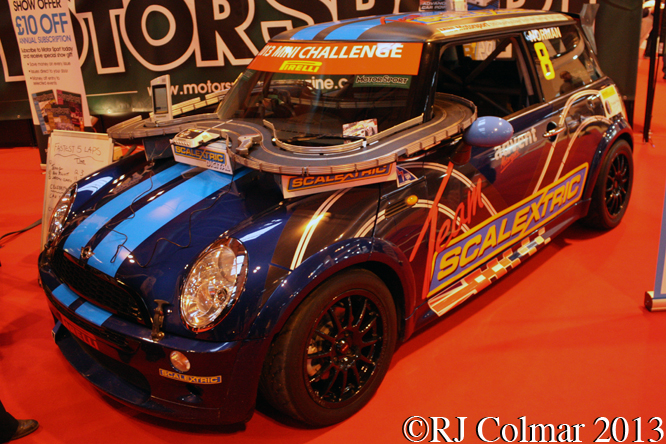
On the Motorsport stand Adrian Norman’s MINI Challenge Club championship car made and interesting back drop for his sponsors Scalextric product. Embarrassingly my five laps at the controls of the electric racer were a whole 3 seconds of the pace.
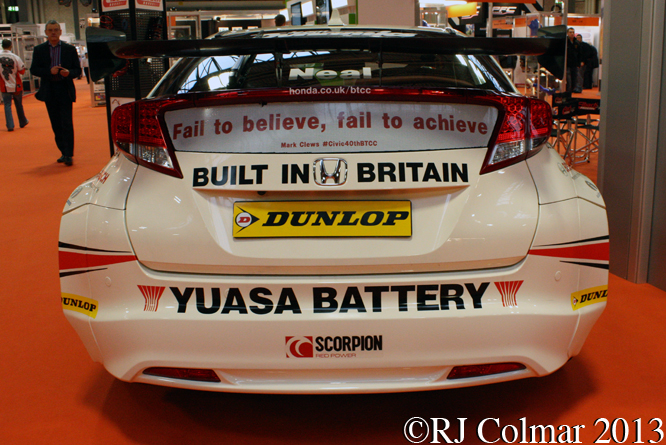
I looked at the MG6 GT BTCC challenger a couple of weeks ago this is one of the Honda Civics run by the British Touring Car Championship winning Yuasa Honda team which took both drivers and constructors titles in 2012.
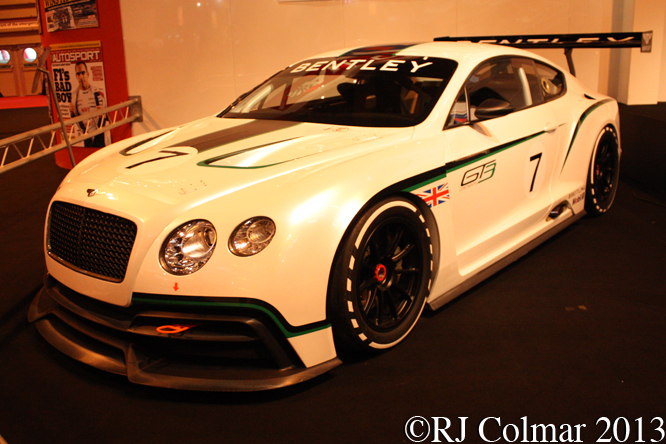
The Bentley GT3 Concept car was announced at the end of 2012 and is undergoing development by erstwhile works backed Ford Rally Team preparation experts M-Sport in anticipation of hitting the tracks in 2014.
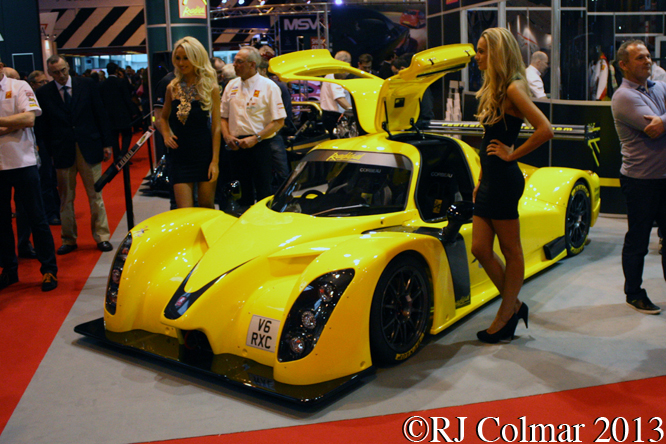
By all accounts Radical holds the title for manufacturing the fastest production car to lap the fabled Nordschleife on the Nurburgring, at Autosport International they launched their latest model the Radical RXC which should be able to go faster still. Powered by a 280 hp Ford V6 and weighing 900 kgs the RXC has a zero to 62mph time of 2.8 seconds and a top speed of 175 mph.
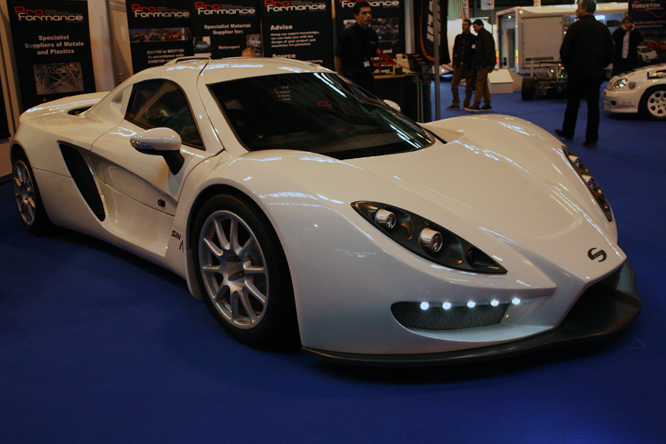
Another Sinsational new car launched at the Autosport International in a similar vain to the Radical was the Sin 01 a product of a joint venture between Pro Formance Metals in the UK and Sin Car GmbH in Germany, the Sin 01 will be offered in competition and street legal versions.
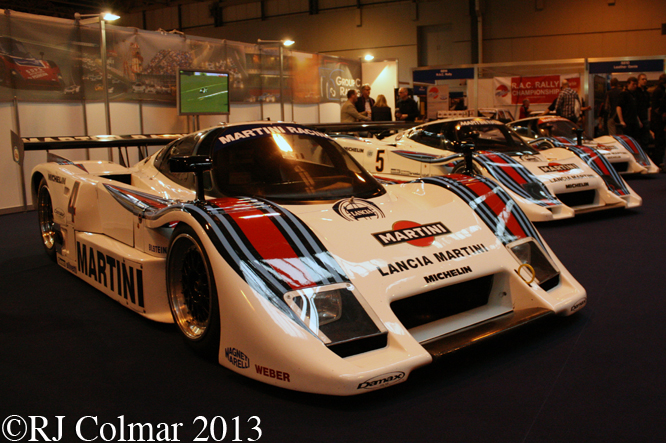
Amongst the sports racing cars present where no less than three 1985 Lancia LC2/85 Group C racers.
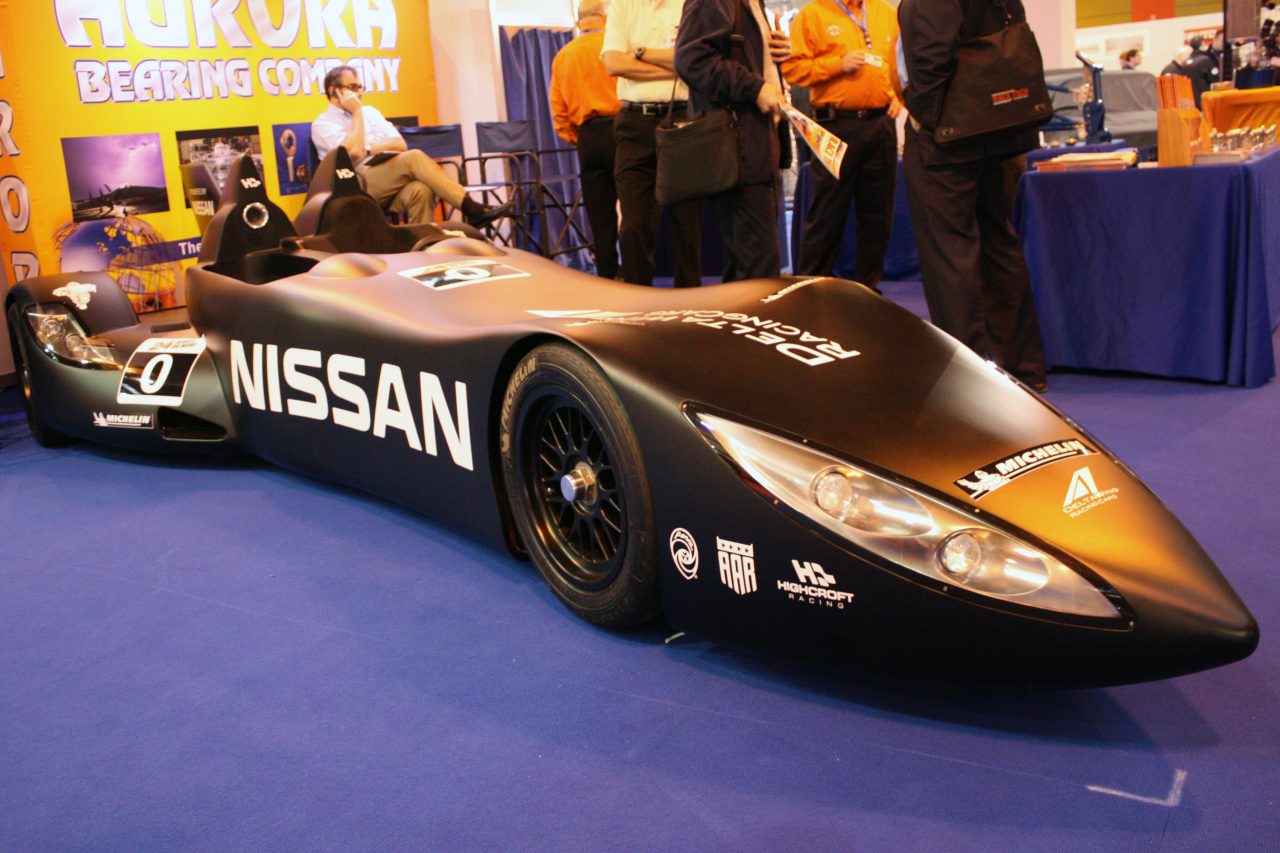
There was also a mock up of the 2012 Nissan DeltaWing Le Mans car which started like as a concept for an Indianapolis 500 racer.
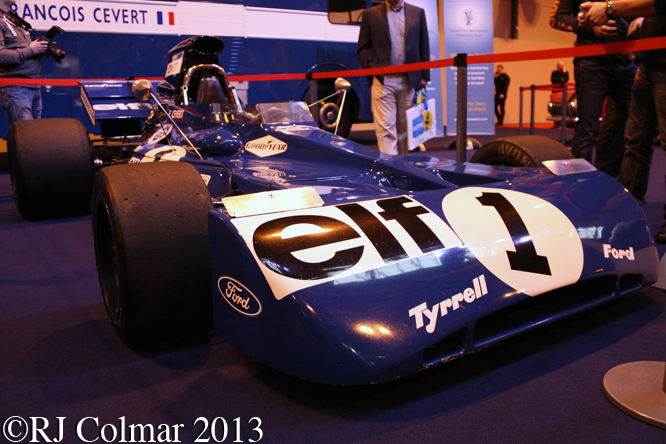
Open wheel racing as might be expected was extremely well represented at the show, above Sir Jackie Stewarts Tyrrell 003 a car built for the 1971 World Championship season which won first time out at the 1971 Spanish Grand Prix and with five further Grand Prix wins in the same car Jackie won his second world championship. In 1972 Sir Jackie won two more races with 003 but it was outclassed by the resurgent Lotus 72 and eventually superseded by the Tyrrell 005 and 006 designs. From 16 starts chassis 003 seen here won 8 Grand Prix in 1971 and 1972.

Moving down a few rungs and forward to 1973 this Martini liveried Lola T340 Formula Ford car caught my attention, not sure one ever raced in these colours back in the day, but if you know different by all means chime in below.
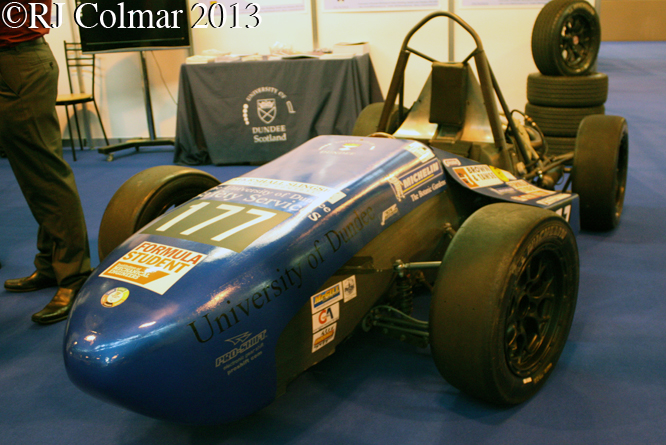
Britains universities have long been a breeding ground for engineering talent that keeps motorsport fed with engineers at all levels on every continent. There is even a competition between the universities to build the best competition vehicles the UDM above is powered by a 600 cc motorbike engine and was designed by engineering students from Dundee University to compete in the iMechE Formula Student series.

Finally there was half a grid of Formula One cars present, one from each manufacturer except the now sadly defunct HRT team, of them all the Mercedes F1 W03 particularly caught my attention with it’s disjointed nose and hideously complex front wing. Mercedes scored a single Grand Prix win in China this year with Nico Rosberg at the wheel.
My thanks to Ted Walker at Ferret Fotographics for kindly inviting me along to this year’s Autosport International.
Thanks for joining me on this “Sinsational” edition of “Gettin’ a li’l psycho on tyres” I hope you will join me again tomorrow. Don’t forget to come back now !
